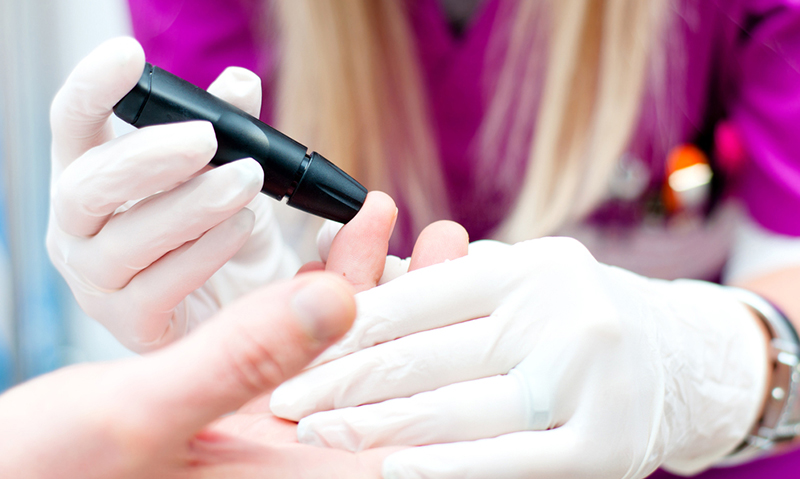POINT-of-care glycated haemoglobin screening for diabetes in regional Aboriginal communities is providing fast and accurate results according to research, but the potential for its wider application has had a mixed response from experts.
Associate Professor Neale Cohen, general manager of diabetes services at the Baker IDI Heart and Diabetes Research Institute, told MJA InSight that he was confident point-of-care (POC) glycated haemoglobin (HbA1c) screening was the best option available to test for diabetes in remote areas.
“When you are 500 km away from the nearest testing centre, the HbA1c method is by far the easiest and most convenient because the results are immediate.”
Professor Cohen was responding to an MJA study that found an HbA1c screening algorithm was more effective at diagnosing prediabetes and diabetes than the standard glucose-based protocol. (1)
The algorithm was based on an initial POC HbA1c assessment by a primary care health provider, followed by laboratory HbA1c assay if the POC test was abnormal.
The study, conducted across six primary health care sites in the Kimberley region of WA, included 255 Aboriginal Australians aged 15 years and over without a confirmed diagnosis of diabetes who were due for testing.
The authors found that compared with the standard glucose protocol, participants screened using the HbA1c algorithm were significantly more likely to have a definitive result within 7 days, be followed up if an initial laboratory measurement was abnormal and be diagnosed with diabetes.
Eight participants subsequently diagnosed with diabetes were incorrectly classified as normal by the standard glucose algorithm, while no participants with normal HbA1c measurements were later diagnosed with diabetes.
The authors said the results showed that adopting the Kimberley HbA1c algorithm would “provide a timelier and more accurate diagnosis of diabetes for Aboriginal people and other high-risk remote populations in Australia and elsewhere in the world”.
In an accompanying editorial, Professor Stephen Colagiuri, director of the Boden Institute at the University of Sydney, said that while there were clinical limitations of HbA1c testing, the approach would facilitate earlier detection and intervention to reduce the burden of diabetes. (2)
Professor Colagiuri wrote that the algorithm had the potential to be more broadly applied across Australia, but that this would be difficult with the current Medicare Benefits Schedule restrictions on reimbursements for HbA1c tests.
Professor Stephen Twigg, head of the department of endocrinology at the Royal Prince Alfred Hospital, told MJA InSight the study confirmed the clinical importance of HbA1c as a screening method in high-risk populations.
However, he said there were some key issues with the approach that needed to be considered.
“The HbA1c test may lose reliability in the presence of altered red blood cell survival, causing false-positives in some cases and false-negatives in others.”
Professor Twigg said a recent haemoglobin level should be known in each patient at the time of testing, and an HbA1c assay should not be used unless blood haemoglobin was normal.
Dr Michael d’Emden, clinical associate professor at the University of Queensland and director of endocrinology and diabetes at Royal Brisbane Hospital, highlighted the discrepancies in the study between the number of patients who were classified as having prediabetes, with the HbA1c algorithm identifying 89 cases, while the glucose protocol only identified seven.
“With such a big difference, we will need better longitudinal data to validate the use of the HbA1c to label patients with prediabetes”, he told MJA InSight.
Professor Twigg said it would be beneficial to use the HbA1c algorithm to screen for diabetes more widely in Australia, provided “the equipment had been validated, and that the assay results are routinely linked back to a reference laboratory”.
However, Dr d’Emden said HbA1c should not be used as a national screening technique, as there was a significant difference between the level of risk in the population included in the MJA study and a typical suburban GP clinic.
“Instead, GPs should use the AUSDRISK [Australian type 2 diabetes risk assessment tool] score to screen patients who are not in a high-risk group. If the patient has a score greater than 12, then the HbA1c test should be performed”, he said. (3)
Professor Cohen agreed, saying that “at the moment for an urban setting, the HbA1c screening is not needed or recommended”.
However, he said HbA1c did have an important role to play in therapeutic diabetes management across Australia.
“Here in Melbourne, we have been using HbA1c testing at our clinics for several years. It’s easy and convenient for patients in the ongoing management of their diabetes.”
(Photo: bogdanhoda / shutterstock)

 more_vert
more_vert